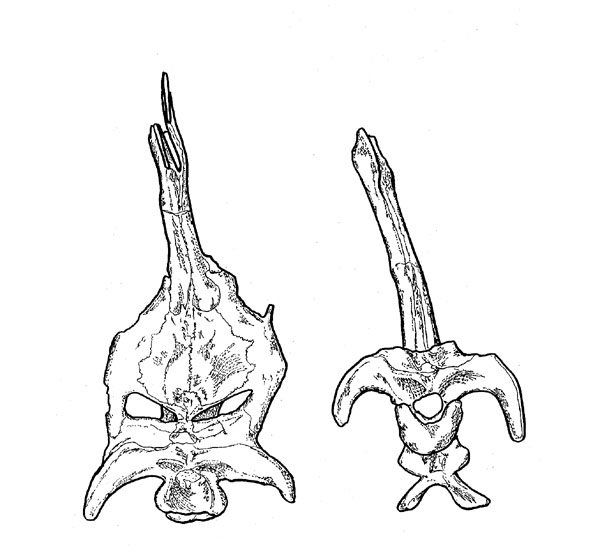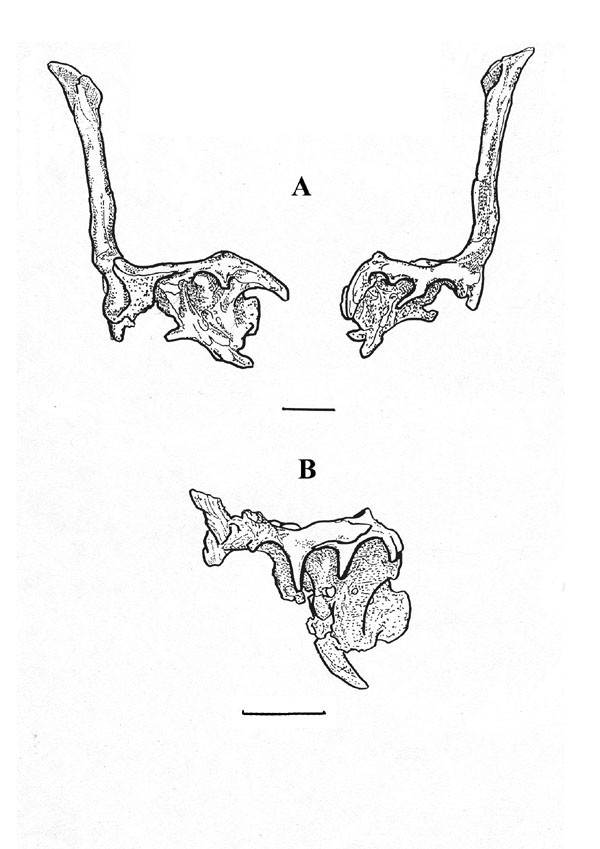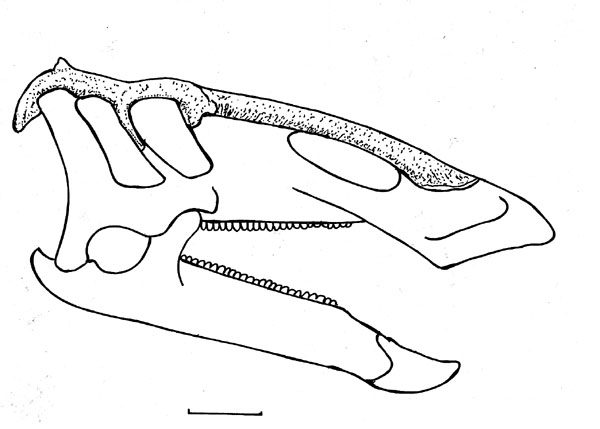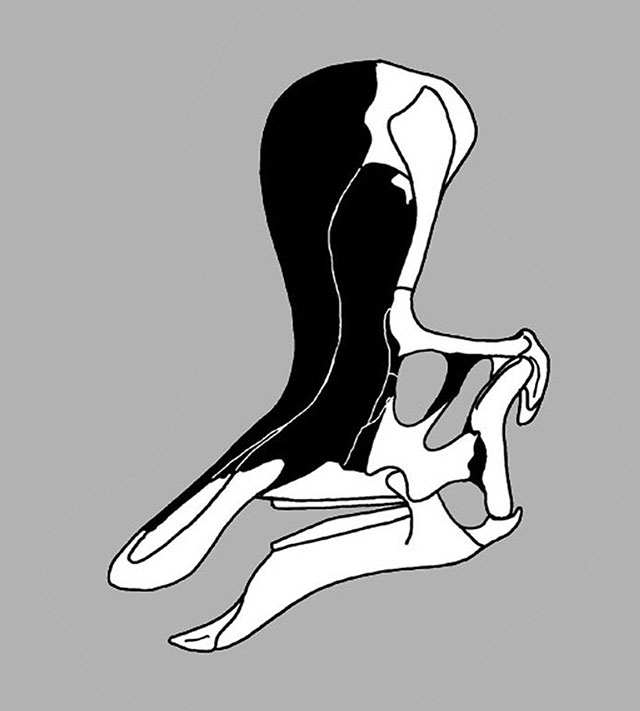
Genus: Tsintaosaurus YOUNG, 1958
Etymology: In reference to the town of Tsintao, Shandong Province, China, and
Greek, sauros, “lizard”: “Tsintao lizard”.
= Tsintaosaurus YOUNG, 1958
= Tsingtaosaurus LESSEM, 1992 (sic)
= Tsintaosourus YOUNG, 1958 (sic)
Species: spinorhinus YOUNG, 1958
Etymology:
Latin, spina, "horn," and Greek, rhinos, "nose."
= Tsingtaosaurus spinorhi LI, DUAN, HU, WANG, CHENG & HOU, 2006 (sic)
Holotype: IVPP V725 (K103)
Locality: Hsikou, Chingkankou, Laiyang, Shandong (Shantung) Province, China.
Horizon: Upper part of the Wangshih Formation.
Biostratigraphy:
Age: Campanian Stage, Senonian Subepoch, Gulf Epoch, Late Cretaceous.
Material: Posterior part of the cranium with the nasal process in front of the frontals.


A) Type in left and right view; B) Paratype IVPP V818: Left side.

Possible reconstruction of the skull. The nasal may have been pulled up and twisted backwards.

Tsintaosaurus spinorhinus (modified from PRIETO-MARTINEZ & WAGNER, 2013), composite skull)
Paratype: V818 (K39): Posterior part of skull with the nasal process broken off.
Referred material:
Locality: Laiyang Basin, Shandong (Shantung) Province, China.
Horizon: Wangshih Series.
Biostratigraphy:
Age: Campanian Stage, Senonian Subepoch, Gulf Epoch, Late Cretaceous.
Material:
K2(21): Teeth.
K24: Fragmentary premaxilla.
K28: Left quadrate, right maxilla. right humerus.
K30: Humerus.
K36: Humerus.
K45: Left maxilla.
K61: Right humerus.
K63: Dentaries, premaxilla, right humerus.
K68: Left quadrate.
K69: Left ulna.
K70: Scapula and coracoids.
K82: Right ulna.
K86: Left radius.
K96: Right scapula and coracoid.
K93: Left maxilla, humerus.
K97: Left surangular.
K107: Left premaxilla.
K113: Humerus.
K141: Fragmentary premaxilla.
K145: Right scapula.
K149: Left surangular.
K150: Left surangular.
K155: Teeth.
K156: Right manus.
K170: Fragmentary right and left dentaries.
K172: Fragmentary left dentary and right dentary.
IVPP V723: Right dentary, sacrum of a juvenile.
IVPP V724: Right ilium and right ischium.
IVPP V725: Cervicals 3-12, 12 fragmentary dorsals, sacrum and 2-59 caudal vertebrae, 4 ribs, gastralia, left scapula and coracoid, pair of sternal bones, humeri, ulna, left ilium, ilia, ischia, right pubes, distal end of left femur, right femur,
IVPP V726: Right ilium.
IVPP V727: Scapula, coracoid, humeri, ulna, right ilium, right ilium, ischia, right pubes, fragmentary right femur.
IVPP V728: Sacrum, scapula, coracoid, humeri, right ilium, ischia, right pubes, left femur?
IVPP V729: Left humeri, ischia.
IVPP V827: Pubes of a juvenile.
Numbers:? 3 left astragulas and right calcaneum. 1 astragalus is from a juvenile, fragmentary left pes.
North-East Geological College at Changchun: Tibiae and left fibula.
Locality: Hsikou Locality, Laiyang, Shandong (Shantung) Province, China.Horizon: Upper Wangshih Formation.
Biostratigraphy:
Age: Campanian Stage, Senonian Subepoch, Gulf Epoch, Late Cretaceous.
Material:
Number: Not given: 67 caudals (only 59 collected).
YOUNG & CHOW, 1962
Locality: Pukiang, Chekiang, China.
Horizon:
Biostratigraphy:
Age: Late Cretaceous.
Material:
IVPP V1046: 3 posterior sacral centra.